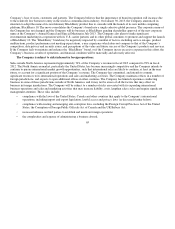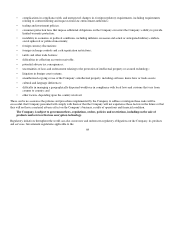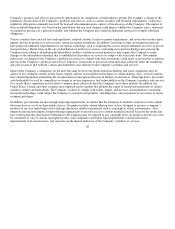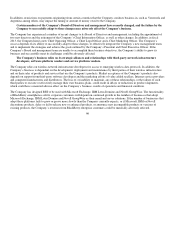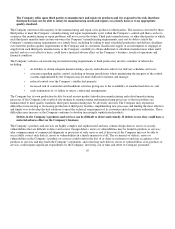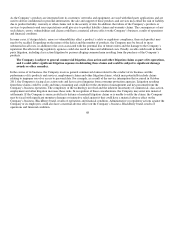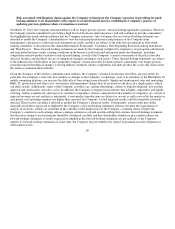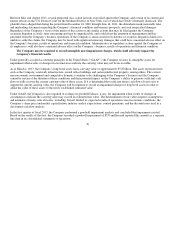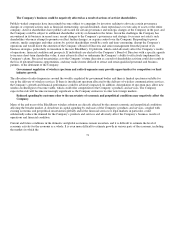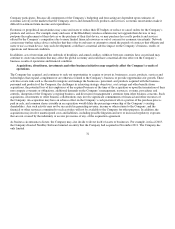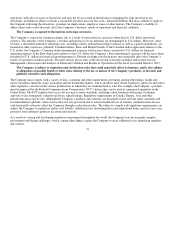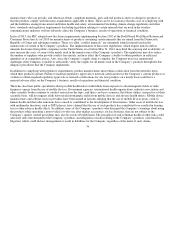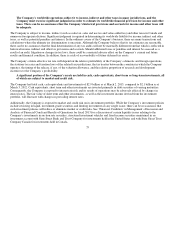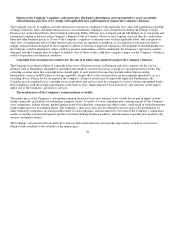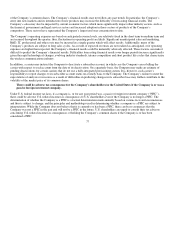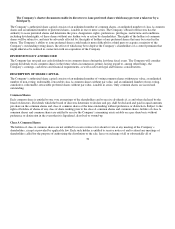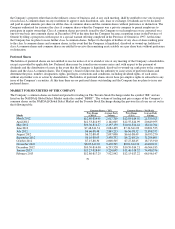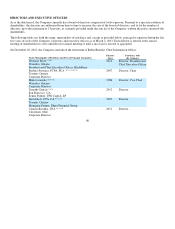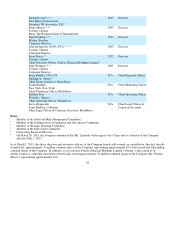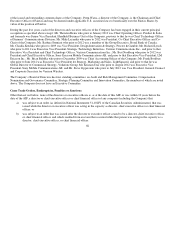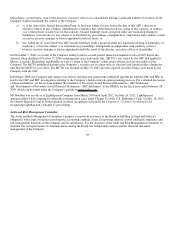Blackberry 2013 Annual Report Download - page 80
Download and view the complete annual report
Please find page 80 of the 2013 Blackberry annual report below. You can navigate through the pages in the report by either clicking on the pages listed below, or by using the keyword search tool below to find specific information within the annual report.
experience with sales of assets or businesses and may not be successful in identifying or managing the risks involved in any
divestiture, including its ability to obtain a reasonable purchase price for the assets, potential liabilities that may continue to apply to
the Company following the divestiture, potential tax implications, employee issues or other matters. The Company’s inability to
address these risks could adversely affect the Company’s business, results of operations and financial condition.
The Company is exposed to fluctuations in foreign currencies.
The Company is exposed to foreign exchange risk as a result of transactions in currencies other than its U.S. dollar functional
currency. The majority of the Company’s revenue and purchases of raw materials are denominated in U.S. dollars. However, some
revenue, a substantial portion of operating costs, including salaries and manufacturing overhead, as well as capital expenditures, are
incurred in other currencies, primarily Canadian dollars, Euros and British Pounds. If the Canadian dollar appreciates relative to the
U.S. dollar, the Company’s Canadian dollar denominated expenses will increase when converted to U.S. dollars for financial
reporting purposes. If the Euro depreciates relative to the U.S. dollar, the Company’s Euro denominated revenues will decrease when
translated to U.S. dollars for financial reporting purposes. Foreign exchange rate fluctuations may materially affect the Company’s
results of operations in future periods. For more details, please refer to the discussion of foreign exchange and income taxes in
Management’s Discussion and Analysis of Financial Condition and Results of Operations for the fiscal year ended March 2, 2013.
The Company is subject to regulation and certification risks that could negatively affect its business, and is also subject
to allegations of possible health or other risks relating to the use or misuse of the Company’s products, or lawsuits and
publicity related to such allegations.
The Company must comply with a variety of laws, standards and other requirements governing, among other things, health and
safety, hazardous materials usage, packaging and environmental matters, and its products must obtain regulatory approvals and satisfy
other regulatory concerns in the various jurisdictions in which they are manufactured or sold. For example, the Company’s products
must be approved by the Federal Communications Commission (“FCC”) before they can be used in commercial quantities in the
United States. The FCC requires that access devices meet various standards, including safety standards with respect to human
exposure to electromagnetic radiation and basic signal leakage. Regulatory requirements in Canada, Europe, Asia and other
j
urisdictions must also be met. Although the Company’s products and solutions are designed to meet relevant safety standards and
recommendations globally, when used as directed, any perceived risk of adverse health effects of wireless communication devices
could materially adversely affect the Company through a reduction in sales. The failure to comply with regulatory requirements can
subject the Company to regulatory and/or civil liability, additional costs (including fines) and reputational harm, and in severe cases
prevent it from selling its products in certain jurisdictions.
As a result of varying and developing regulatory requirements throughout the world, the Company faces increasingly complex
procurement and design challenges, which, among other things, require the Company to incur additional costs identifying suppliers
and contract
73


